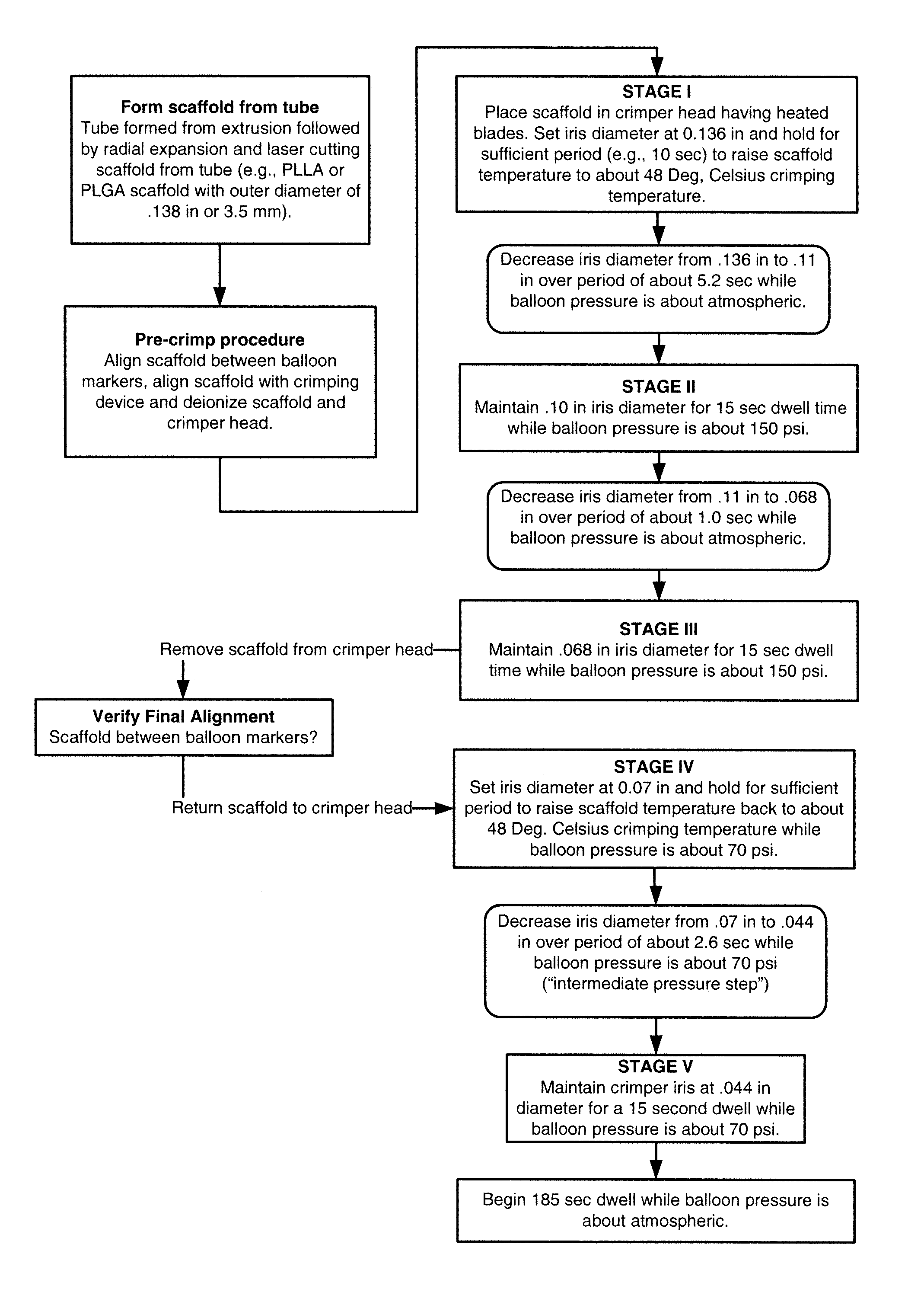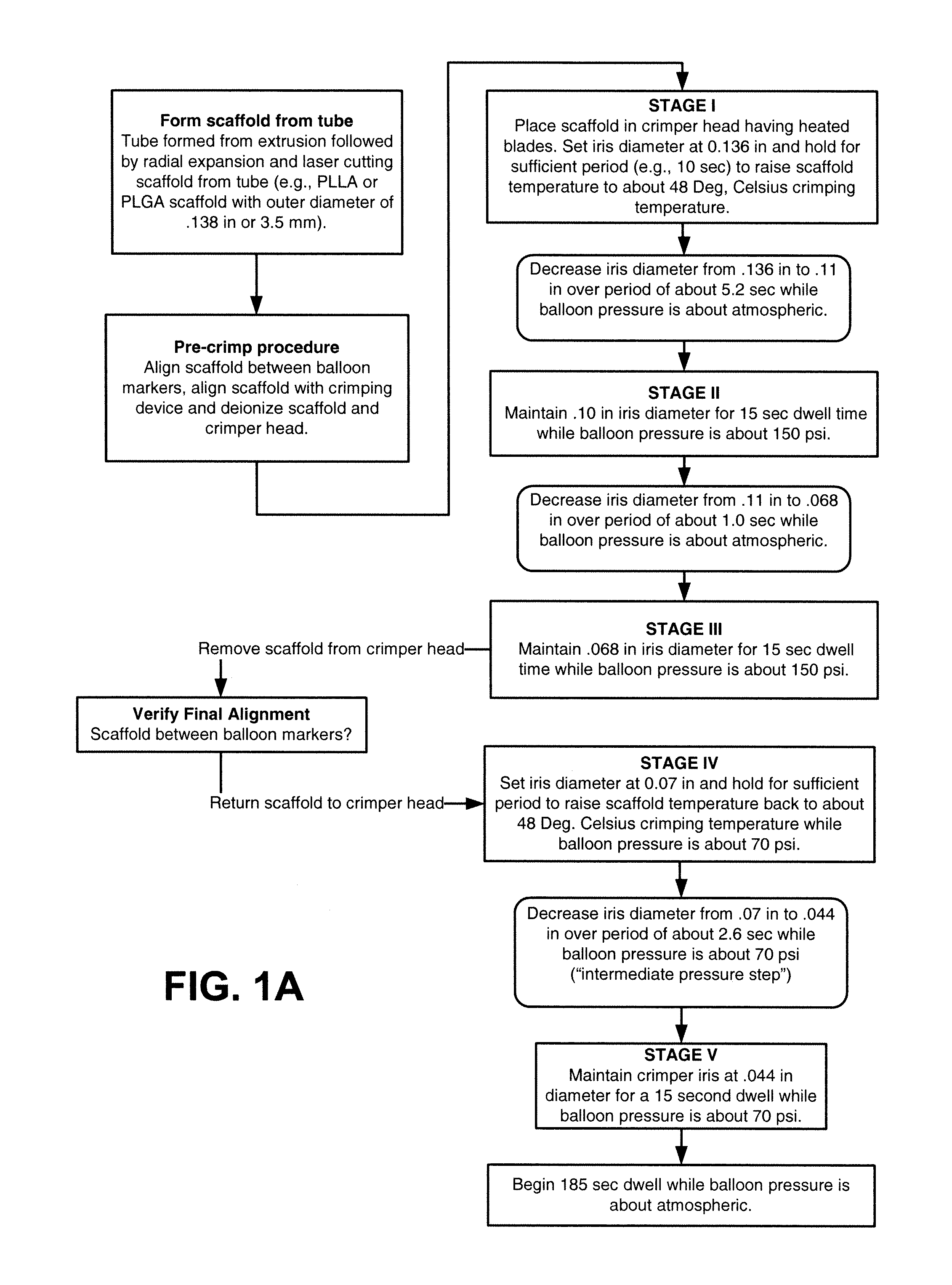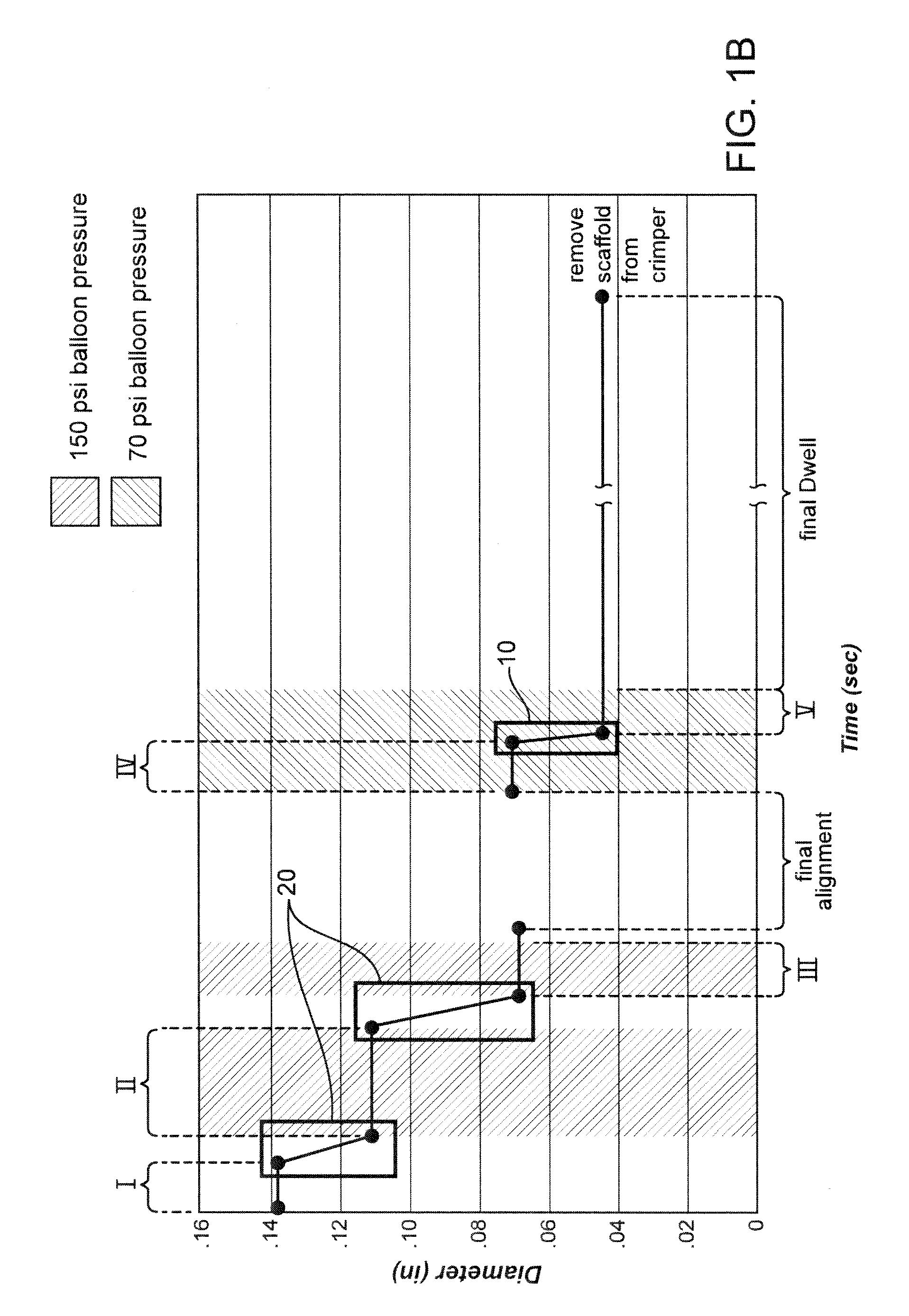Methods for Increasing a Retention Force Between a Polymeric Scaffold and a Delivery Balloon
- Summary
- Abstract
- Description
- Claims
- Application Information
AI Technical Summary
Benefits of technology
Problems solved by technology
Method used
Image
Examples
examples
[0053]Further details of the FIG. 1A flow process for a 3.5 mm scaffold manufacture and crimping to a delivery balloon will now be discussed. FIG. 1B illustrates in graphical form the crimping portion of the FIG. 1A flow—a graph of scaffold diameter verses time with a balloon pressure of 150 psi or 70 psi applied during the dwell periods and the intermediate pressure step (i.e., crimping between Stage IV and Stage V). The scaffold was crimped using a crimper having film-sheets disposed between the metal crimper blades and the scaffold. This particular type of crimper is discussed in greater detail below.
[0054]As discussed above, the scaffold is formed from a PLLA or PLGA precursor, including a biaxial expansion of the precursor to form a tube, followed by laser cutting the scaffold from the tube. Next, a pre-crimp procedure is performed, which includes placing the scaffold between the balloon markers and aligning the scaffold with the iris of the crimper. Using an anti-static air gu...
PUM
| Property | Measurement | Unit |
|---|---|---|
| Temperature | aaaaa | aaaaa |
| Length | aaaaa | aaaaa |
| Fraction | aaaaa | aaaaa |
Abstract
Description
Claims
Application Information
 Login to View More
Login to View More - R&D
- Intellectual Property
- Life Sciences
- Materials
- Tech Scout
- Unparalleled Data Quality
- Higher Quality Content
- 60% Fewer Hallucinations
Browse by: Latest US Patents, China's latest patents, Technical Efficacy Thesaurus, Application Domain, Technology Topic, Popular Technical Reports.
© 2025 PatSnap. All rights reserved.Legal|Privacy policy|Modern Slavery Act Transparency Statement|Sitemap|About US| Contact US: help@patsnap.com



